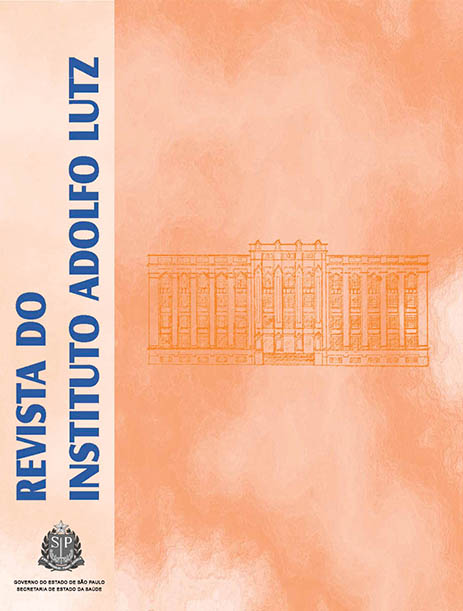Abstract
Uba Mango is a fruit of low cost, widely grown in the Forest Area (Zona da Mata Mineira) – Minas Gerais, Brazil, and it is highly appreciated by consumers. To evaluate the natural antioxidants contents during the ripening of this fruit, the present study quantified the contents of β-carotene and total vitamin C (ascorbic acid – AA and dehydroascorbic – DHA) in fresh fruit at three ripening stages: unripe, partially ripe and ripe. Analyses were carried out by High Performance Liquid Chromatography (HPLC). The average contents of β-carotene were higher in ripe mango followed by partially ripe mango, and the unripe mango showed the lowest contents. On the contrary, the highest AA and total vitamin C contents were found in unripe mango, followed by the partially ripe fruit and ripe mango. No difference in DHA contents was found among the mango ripening stages. The Uba Mango showed to be a rich source of natural antioxidants, containing β-carotene and vitamin C contents higher than those commonly found in other varieties of mango, and being suitable to provide the daily requirement of vitamins A and C.
References
1. He F, Nowson C, Lucas M, Macgregor G. Increased consumption of fruit and vegetables is related to a reduced risk of coronary heart disease: Metaanalysis of cohort studies. J Hum Hypertens. 2007;21(9):717-82.
2. Laur LM, Tian L. Provitamin A and vitamin C contents in selected California-grown cantaloupe and honeydew melons and imported melons. J Food Comp Anal. 2011;24(2):194-201.
3. Gonçalves NB. Caracterização física e química dos frutos de cultivares de mangueira (Mangifera indica L.). Ciênc Agrotecnol. 1998;22(1):72-8.
4. Rodriguez-Amaya DB. Some considerations in generating carotenoid data for food composition tables. J Food Comp Anal. 2000;13(4):641-47.
5. Li Z, Wang N, Raghavan VGS, Vigneault C. Ripeness and rot evaluation of ‘Tommy Atkins’ mango fruit through volatiles detection. J. Food Eng. 2009;91(2):319-34.
6. Rodriguez DB, Raymundo LC, Lee TS, Simpson KL, Chichester CO. Carotenoid pigment changes in ripening Momordica charantia fruits. Ann Bot. 1976;40:615-24.
7. Pinheiro-Sant’ana HM, Stringheta PC, Brandão SCC, Azeredo RMC. Carotenoid retention and vitamin A value in carrot (Daucus carota L.) prepared by food service. Food Chem. 1998; 61(1-2):145-51.
8. IOM. Institute of Medicine. National Academy of Science, Food and Nutrition Board. Standing Committee on the Scientific Evaluation of Dietary Reference Intakes. Dietary Reference Intakes: vitamins. Washington, D.C., National Academy Press, 2001. [acesso 26 fev 2010]. Disponível em: [http://fnic.nal.usda.gov/nal_display/index.php?info_center=4&tax_level=3&tax_subject=256&topic_id=1342&level3_id=5140].
9. Campos FM, Ribeiro SMR, Della Lucia CM, Stringheta PC, Pinheiro-Sant’ana HM. Optimization of methodology to analyze ascorbic and dehydroascorbic acid in vegetables. Quim Nova. 2009; 32(1):87-91.
10. Medlicott AP, Thompson AK. Analysis of sugars and organic acids in ripening mango fruits (Mangifera indica L. Keitt) by high performance liquid chromatography. J Sci Food Agric. 1985;36(7):561-6.
11. Hernández Y, Lobo MG, González M. Determination of vitamin 11. C in tropical fruits: a comparative evaluation of methods. Food Chem. 2005;96(4):654-64.
12. Ribeiro SMR, Queiroz JH, Queiroz MELR, Campos FM, Pinheiro- Sant’ana MH. Antioxidant in Mango (Mangifera indica L.) Pulp. Plant Foods Hum Nutr. 2007;62(1):13-7.
13. Lee CY, Massey LMJR, Van Buren JP. Effects of postharvest handling and processing on vitamin contents of peas. J Food Sci. 1982; 47(3):961-4.
14. Howard LR, Smith RT, Wagner AB, Villalon B, Burns EE. Provitamin A and ascorbic acid content of fresh pepper cultivars (Capsicum annuum) and processed jalapenos. J Food Sci. 1994; 59(2):362-5.
15. Vinci G, Botrè F, Mele G. Ascorbic acid in exotic fruits: a liquid chromatographic investigation. Food Chem. 1995;53(2):211-4.

This work is licensed under a Creative Commons Attribution 4.0 International License.
Copyright (c) 2011 Instituto Adolfo Lutz Journal
